Suining South Riverfront Park

Suining South Riverfront Park
Developer: Suining Economic and Technological Development District, Sichuan Province
Designers:
* ECOLAND Planning and Design Corp.
* Sichuan Provincial Architectural Design
* Research Institute CO., LTD.
Location: Suining, Sichuan Province, China
In recent years, a number of Chinese cities have embarked on riverfront regeneration projects that aim to revitalise ugly and polluted urban riversides. Located in Sichuan Province, Suining South Riverfront Park is an example of one such project, creating a vibrant and highly replicable wetland park in what was formerly a desolate stretch of waterfront cut off from the city by a busy road. 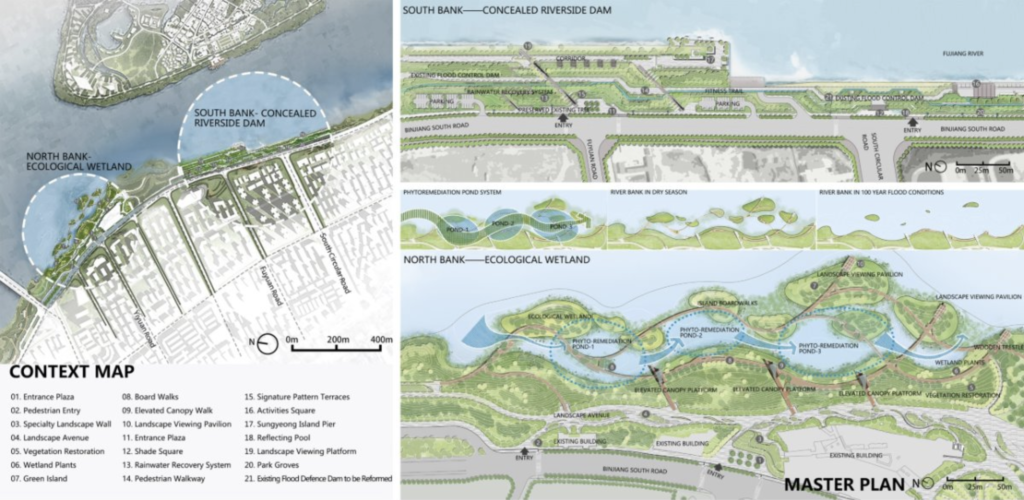 Master plan
Master plan
Divided into two sections spanning a total of four kilometres of the Suining riverfront, the newly-created park weaves the desolate former flood-prevention embankment into the urban fabric of the city. Although construction of bridges and/or subways allowing seamless passage across the riverfront road await a later phase of development, access to the waterfront has been greatly improved via a number of road crossings, while wide plaza-like entrances invite pedestrian access to the park itself, where a network of pathways, plazas, and elevated outlooks runs along its length. The part of the park standing above the high-water level is programmed with recreational activities that include a running track, fitness zones, and outlook pavilions. 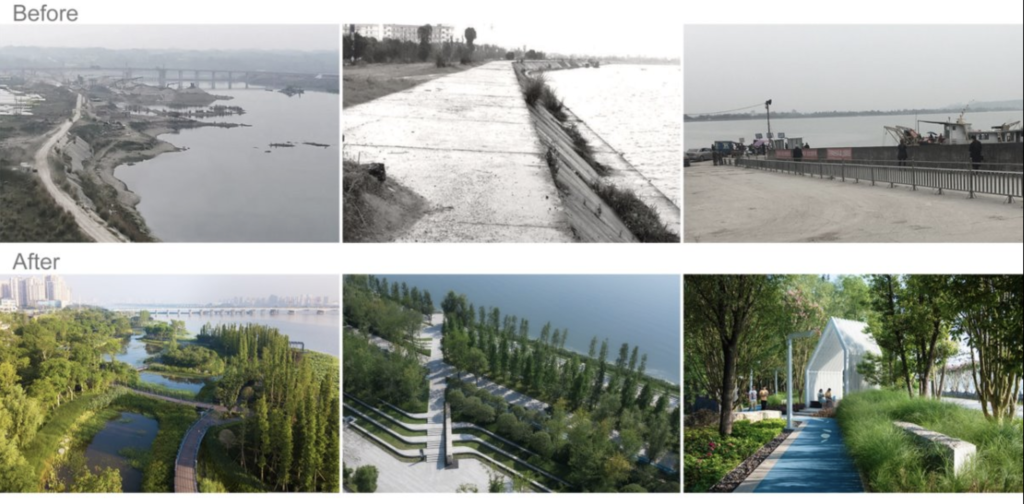 Green Infrastructure Through Eco-Approaches
Green Infrastructure Through Eco-Approaches
One of the park’s main design features is the reintroduction of a river wetland lagoon system that embraces the seasonal flooding cycle of the river and invites the return of native wildlife. Lush vegetation slopes continuously towards the waterfront, transitioning from complex plantings of native trees and shrubs on higher ground to an intricate system of wetlands, ponds, and newly-created islands in areas closest to the river, which are designed to flood as the river rises in the rainy season. Elevated walkways passing through the wetland areas, however, always remain above water. 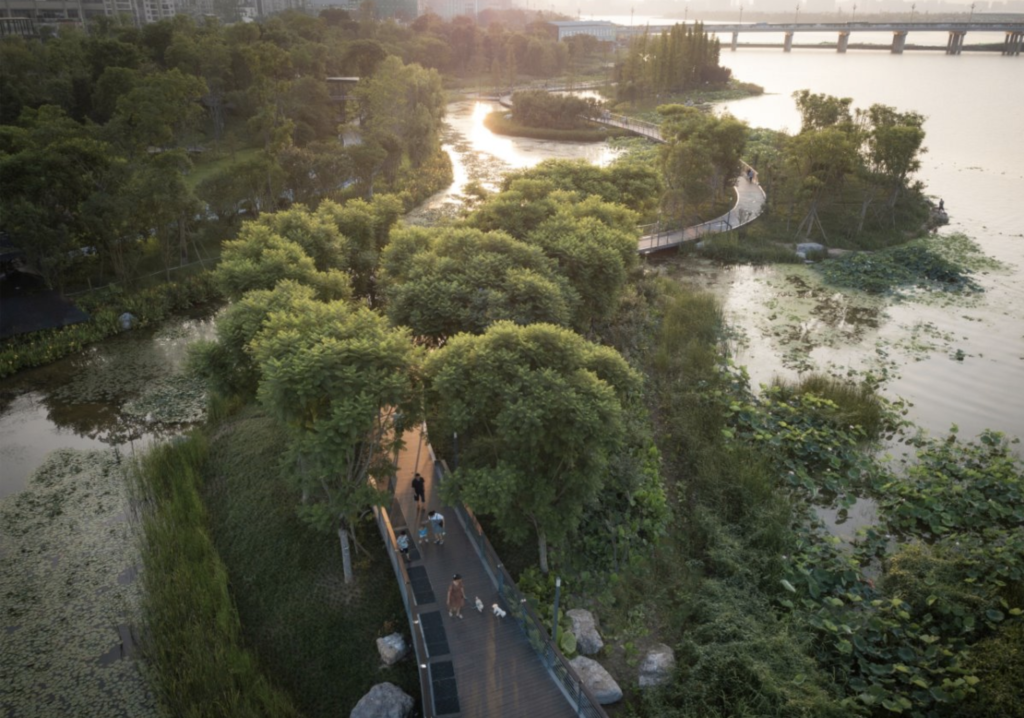 A New Interconnected Shoreline Landscape for Citizens
A New Interconnected Shoreline Landscape for Citizens
In terms of sustainability, the park plays various other functions; firstly as a stormwater management tool to control urban runoff and flashfloods, and secondly as a natural filter. While the Fujiang River is not especially polluted, the park’s richly-planted bio-swales remove contaminants as water progresses along its length through three separate phyto-remediation ponds. The water is then released into water features for local people to enjoy.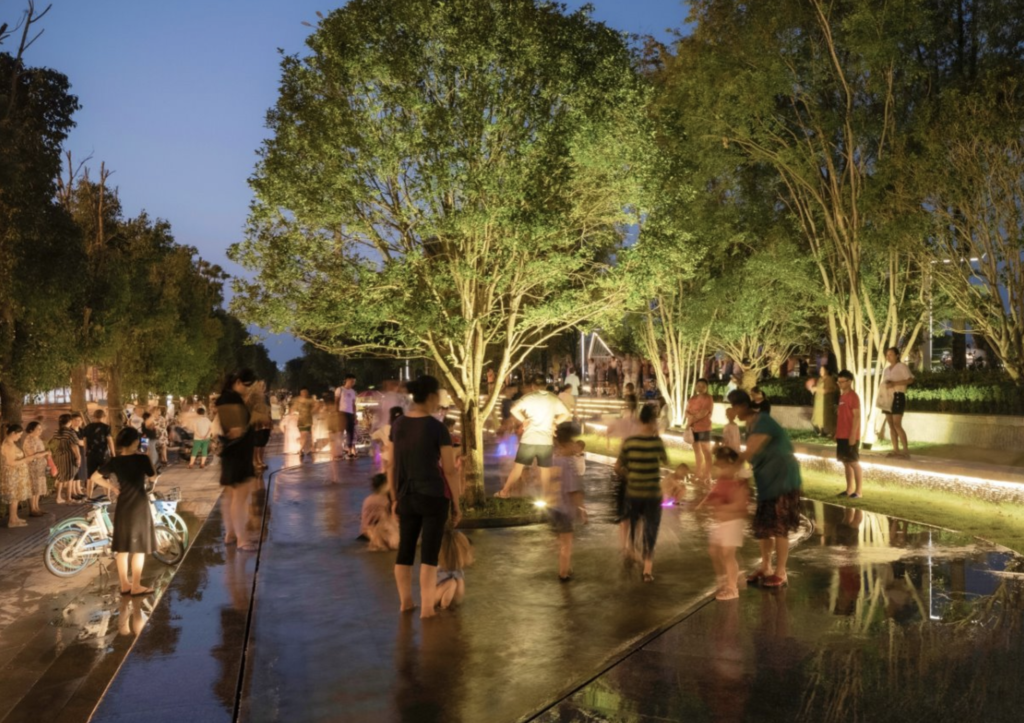 Riverfront Nightlife Returned
Riverfront Nightlife Returned
In addition, the area between the two sections of the park has been left untouched by landscapers so that natural habitats can evolve naturally within the context of the newly-created wetland. This is not only cost effective but also ensures that much of the restored riverbank can evolve in a way appropriate to the local environment. 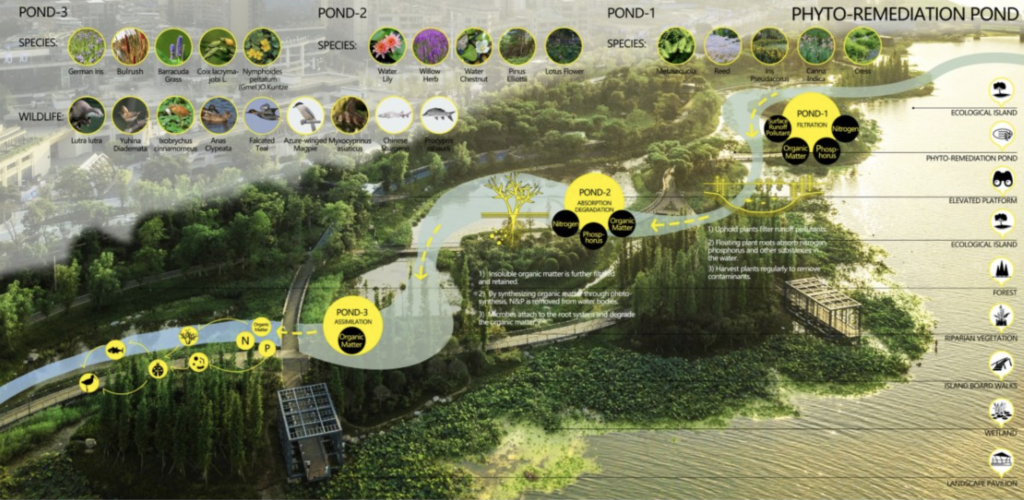 Functional Urban Open Space and a Phytoremediation System
Functional Urban Open Space and a Phytoremediation System
Riverfront regeneration schemes such in Suining are difficult to execute in the West due mainly to their expense, and the same problem often frustrates them in China too, despite the fact that heavy seasonal rainfall means local authorities are constantly launching flood remediation projects of one kind or another. As one jury member noted: “We work on a lot of masterplans of riverfront areas and have often advocated for this type of ecological ponding system, with transitional zones as the waterways meet the land. But getting developers and governments on board is always an uphill battle.”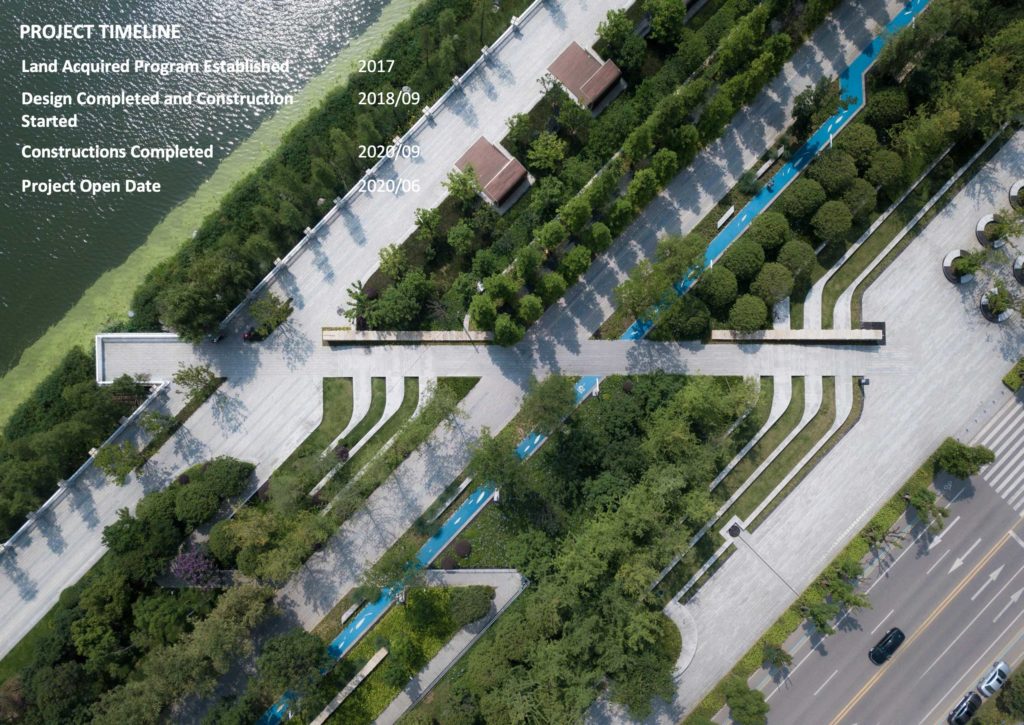 Riverfront Urban Fabric Engages Adjacent Communities
Riverfront Urban Fabric Engages Adjacent Communities
In this case, the district government had originally planned the project purely as a way to address the city’s drainage and flood prevention needs, but changed the original plan that envisaged a hard edge to the river at the prompting of the developer. Over the long term, and depending on the public response (which has so far been positive), authorities currently plan to extend the revitalisation effort along other parts of the city waterfront.
From a financial point of view, projects like this are generally financed on a public/private basis in China. The landscape improvements are financed upfront by the developer, which is then granted nearby land on a concessionary basis by the local government to develop on a for-profit basis.
